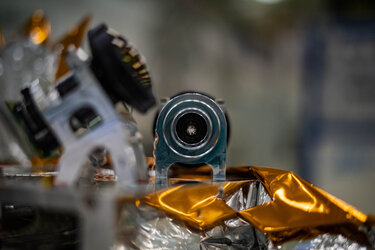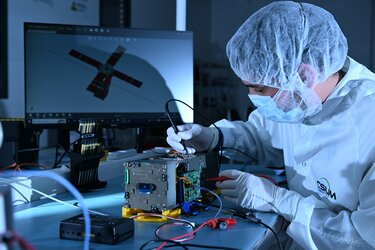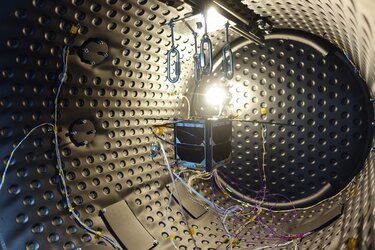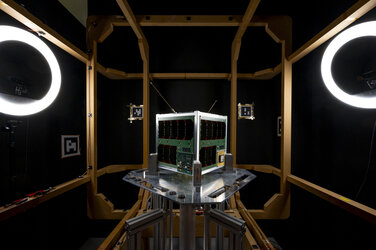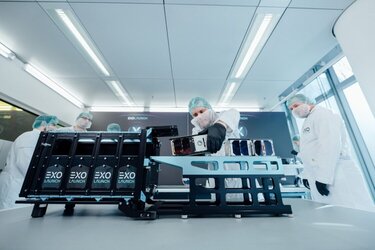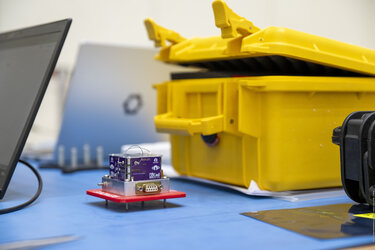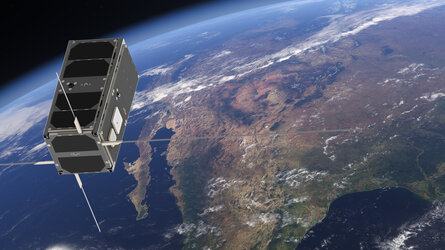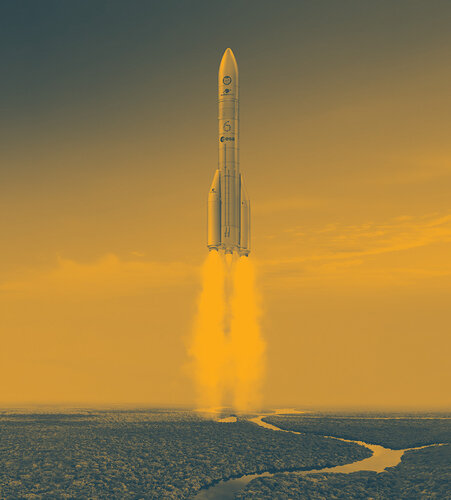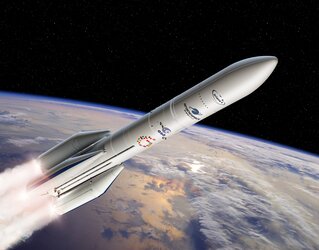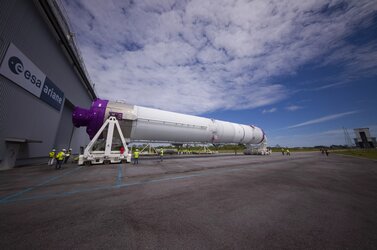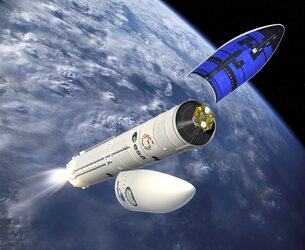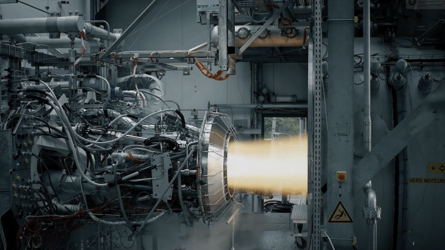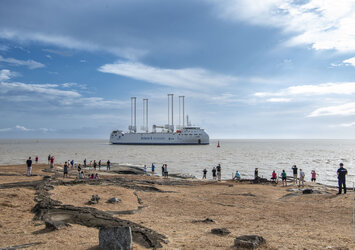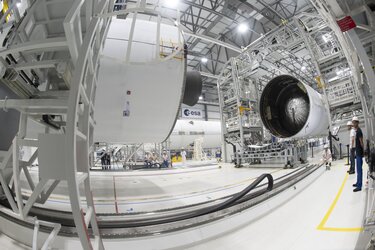Ariane 6 launches Peregrinus: students take on the Sun
Europe’s newest rocket soon launches, taking with it many space missions each with a unique objective, destination and team at home, cheering them on. Whether launching new satellites to look back and study Earth, peer out to deep space or test important new technologies in orbit, Ariane 6’s first flight will showcase the versatility and flexibility of this impressive, heavy-lift launcher. Read on for all about Peregrinus, then see who else is flying first.

Peregrinus is an experiment fixed onboard Ariane 6, developed by high-school students at Sint-Pieterscollege in Brussels and the Institut Vallée Bailly in Belgium. The science mission’s goal in orbit is to measure the correlation between Earth’s magnetic field and the intensity of hard X-ray and soft gamma radiation.
The experiment is named after Petrus Peregrinus de Maricourt, a French medieval scholar who studied magnetism and – unusual for his time – favoured an experimental approach to studying the natural world as opposed to a philosophical one.

Orbiting Earth onboard Ariane 6 at an altitude of 580 km, Peregrinus will provide data on the impact of solar activity on and levels of radiation in Earth’s magnetic field. Better understanding in this area helps assess radiation risks to astronauts on the Moon or en route to Mars.
The radiation detector is a First Sensor X-100-7 encapsulated photodiode. It converts hard X and soft gamma photons into an electrical signal, and is compatible with 5V circuitry, as is the Iridium communications module that Peregrinus uses to downlink its findings.
Peregrinus will count photons in the 2 - 30 keV range over a one-second interval, while also measuring the strength of Earth's magnetic field using the 3D magnetometer on an LSM9DS1 inertial measurement unit. The data obtained over a 10 second time interval is then transmitted to the ground through the Iridium satellite network.

This all-in-one orientation unit can sense and provide information with nine degrees of freedom. It can tell where Earth is and how fast Peregrinus is moving in 3D space by measuring gravity; a magnetometer can determine where magnetic north is, and a gyroscope will measure the upper stage’s spin and twist. All this data is compressed to save space and transmitted to the ground via the Iridium satellite network.
“Every 10 seconds we will get a message with 10 seconds worth of data in it, on radiation striking our detector and Earth’s magnetic field,” explains Erik de Schrijver, Science teacher at Sint-Pieterscollege Jette and Peregrinus Project Leader.
“As well as this, we will get rough positioning data provided by the satellite network and of course, we count on using Ariane 6’s positioning data, too. This magnetic data transmission will continue until stopped by the reentry of the upper stage and with it, our experiment. With all this information, we should get an interesting picture of high-energy radiation striking Earth’s magnetic field.”

But, first and foremost, Peregrinus is a hands-on space education project, providing students with learning opportunities on spacecraft design, space project management, spacecraft testing, and knowledge transfer. These are the first European high school students to put a payload into orbit on a rocket.
The mission shows that with dedication and hard work, high school students can reach orbit and help boost the space ambitions of other children and young people across Europe.
“This opportunity to fly on Ariane 6's first flight is one of a kind for our students,” continues Erik. “We hope Peregrinus will create momentum for more ‘high flying’ and hands-on space education projects for European students at all levels.”

Ariane 6 is planned to launch in July 2024. It follows the hugely successful Ariane 5, Europe's workhorse rocket for more than a quarter century, flying 117 times between 1996 and 2023 from Europe's Spaceport in French Guiana.
Ariane 6 has been designed for all possible futures. At its core is maximum versatility. It is able to put any satellite or payload into any orbital path. This is made possible with the new restartable Vinci engine that will power up the Ariane 6 upper stage again and again, stopping and starting to insert missions into any orbit they need to be. It will save enough fuel for a final burn to deorbit and reenter safely back through Earth’s atmosphere.

“Being able to work with ESA and Ariane is a dream come true. Having had plenty of people who've worked on this project for years and the launch finally getting closer, feels surreal,” explains 18-year-old Ms Lore De Becker who has been working on this mission, studies Latin and Maths and plans to next pursue civil engineering.
“Knowing that we, as secondary school students, got to play a tiny part in such a complex campaign that is the new Ariane 6 launch... It is a once-in-a-lifetime experience that we're grateful to be a part of”.
Joining Lore on the team are Camille Vanderhasselt and Vivianne Michiels from Sint-Pieterscollege Jette, but also Esteban Debordes and Daniel Smirnov from Institut Vallée Bailly. Both are in their final year studying science and maths – together they built the Peregrinus hardware. For the mission’s software, Yves Jansen-Verlaak and Roman Vannieuwenhuyse were in the lead.
“Ariane 6 – a small step for mankind, a giant leap for us,” concludes the young Peregrinus team.





